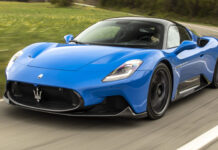Sports betting is amazing, especially when you know what you’re doing. One of the things many of us wish we could place our bets on is F1 and the amazing cars the racers drive. Today we look at a few facts about F1 cars that we never knew.
Fun Facts We Wished We Had Known Sooner.
The more you get into vehicles, the more you’ll want to learn about F1 cars, as they host some of the world’s top speeds. F1 cars are amazing to watch, with each vehicle hosting something different that we never knew. Below we look at the other facts we wish we had known sooner about F1 cars.
The Rev Power is Amazing
Did you know that the typical maximum speed for most cars goes from 6000 to 7000 rpm? Any vehicle that hosts 8000 rpm is considered powerful and amazing. The kicker here is that F1 cars can rev up to 20 000 rpm making their rev power more than amazing. In 2022, the revving power of F1 became unrestricted, making it easier for cars to exceed 20 000 rpm. In the past, F1 cars could only rev up to 18 000 rpm, which is still insufficient for what they want to achieve.
The Maximum
F1 cars require a certain level of physics to attain certain speeds. For this reason, the driver and the vehicle need to weigh a certain amount to reach certain speeds. Some racers even go to the extent of adding weights to the car to make sure they get the maximum weight. It’s important to remember that the weight limit isn’t just about the speed but is also there for safety purposes. Certain parts of the F1 car, such as the tires, lose weight during races. Each tire will lose a pound of mass because of the wear and tear during races.
For this reason, many drivers change their tires about two to four times during a race to help maintain weight. Also, driers lose weight due to excessive sweating and many other things contributing to weight loss. Racers can lose four to six pounds of bodily fluids per race because of the intensity.
The Brakes Need a Break
As we all know, F1 cars travel at extremely high speeds when racing; however, the same cannot be said when trying to turn corners. For F1 vehicles to safely ride a corner, they must go from 200 mph to a very low 31 mph or 192 mph. These happen at high speeds and within short periods, requiring much power from the brakes. The more brake power you need, the easier it is for your brake to heat up, and some F1 brakes have reached a whooping 120०C to try and come to a stop.
The Weather Contributes, and it Matters.
We all know how some weather can affect our driving, and many times we need to adjust how we drive according to the Weather; the same can be said for F1 cars. We may struggle to go in the rain due to slips because F1 drivers need to be careful of how they go in rainy Weather. Aside from mistakes, other issues come with shower, such as low visibility and an unpredictable track. It’s also important to understand that F1 cars do not come with things such as ABS, traction control, stability control, and many more, making it more difficult for drivers to maintain control in sticky situations. This also means that drivers risk in a great way when weather conditions change and need to remain extra vigilant, as a move made can be lethal.
Conclusion
F1 cars are highly intensive and are more complicated than we may think. A million fun facts can be found about F1 cars, which makes racing and F1 far more interesting.


























